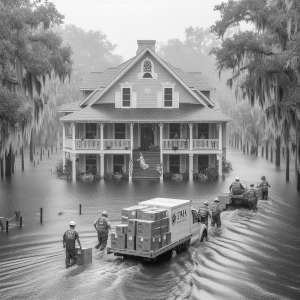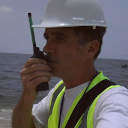Week 1: Optimizing Disaster Assistance Sequence of Delivery
Week 1: Understand FEMA's Sequence of Delivery, which ensures disaster survivors receive aid in the correct order as per FEMA policy and federal regulations.
By Murray Wennerlund, published on
The FEMA Sequence of Delivery dictates the order in which disaster survivors receive assistance from FEMA and relief partners. It aims to ensure applicants receive all entitled assistance, adhering to FEMA policy and federal regulations.
The FEMA disaster sequence of assistance delivery ensures that survivors receive aid in a specific order, preventing the provision of duplicative benefits or services at any time during the federally funded recovery process. This serves as a checksum process to protect American taxpayers from fraud and abuse of federal dollars provided by taxpayers. The sequence also outlines application steps for disaster assistance from various controlling agencies.
The order of the Sequence of Delivery for Disaster Recovery:-
Emergency Assistance from Voluntary Agencies.
Food, Shelter, Clothing, Medical. -
Private and Federally Secured Insurance Coverage
Homeowner, Renter, Flood insurances for example. -
Long-Term and Short-Term Housing Assistance
Lodging Expense Reimbursement, Temporary Rental, Shelter in Place Repairs, Replacement Assistance, Temporary Housing, Lease, etc. -
Other Needs Assistance (ONA) - Non-Income Based, Non SBA Dependent Items.
Funeral, Medical, Dental, Child Care, Critical Needs Assistance (changing to Serious Needs Assistance), etc. -
SBA Disaster Assistance for Home and personal property loans
Income Evaluation Test which measures your ability to repay a loan.
It is recommended at this point to stop and review your financial status and measure if additional household debt is what you want or if you should attempt to apply for additional grants which may take more time. -
Other Needs Assistance (ONA) - Income Based
If the SBA denies you a loan, or FEMA determines you are eligible for ONA assistance being low income your state governor's office has filed with FEMA all services they will provide. This will include vehicle repair and replacement funding as well as generators for those with medical needs for example. -
Other Needs Assistance (ONA) - Governor Allowed
Your state governor's office may collaborate with FEMA to develop additional on-the-fly programs for your recovery, such as funding for shelter-in-place repairs or assistance for seeking shelter out-of-state. -
Unmet Needs combined with Other Needs Assistance (ONA) - Income Based
FEMA lists HUD CDBG-DR as "Other" in the sequence of delivery. HUD provides grants to assist with all repairs or reconstruction not covered by other processes and agencies. HUD assistance is currently available as soon as the disaster is reconized as a Major or Severe Disaster by the Executive Branch of Government (The President).
HUD currently offers funding that congress allocates to each state in advance of the disaster year.
Congress also provides additional allocations when needed and at the request of your congressional representatives and stage governor.
The grants provided are technically not limited in amounts but have to be reviewed and approved by HUD prior to creating a program and a method to distribute the federal tax dollars. -
Unmet Needs - Federal and State programs funded by US Taxpayers.
Your state will provide forgivable loans, loan interest loans, and low-income business loans for economic growth in select areas.
Most states will create forgive loans while others will collect the loan and interest then use the funds for other programs or budget expenses, it's state funds at that point.
I will provide detailed information for each step to help you maximize the benefits available to you and your household.
Your state government and FEMA representatives may not provide detailed information beyond their respective scopes of support and training services.

